The mid-size SUV is now a brand's most crucial model.
Now the defining volume seller of our age, the ever-popular category transcends brand and market position – and Audi is no exception.
To that end, the German brand reminds us that Q5 is its most successful SUV, having sold almost 40,000 units in Australia so far. No pressure on this new one then, which brings some much-needed updates to the current-generation SUV which launched back in 2017.
Has Audi done enough to keep the Q5 sticking it to its (also very good) arch-rivals from Germany and the world for years to come? We sampled the updated car at its Australian launch to find out.
Audi Q5 2021: 45 Tfsi Quattro Launch ED Mhev
| Engine Type | Turbo 4, 2.0L |
|---|---|
| Fuel Type | Premium Unleaded/Electric |
| Fuel Efficiency | 8.0L/100km (combined) |
| Seating | 5 |
| Price From | $47,960 - $55,110 |
| Safety Rating |
|
Does it represent good value for the price? What features does it come with?
8 / 10
Would you believe me if I told you the new Q5 was a value buy despite a price-hike for this year?
Yes, it's a luxury SUV, but with a boost in equipment and price-tags across the range that range from slightly to significantly below its key rivals, the Q5 impresses from the get-go.
The entry-level variant is now simply called the Q5 (it used to be called the 'Design'). It's available with a choice of either a 2.0-litre diesel (40 TDI) or a 2.0-litre petrol (45 TFSI) engine, and equipment levels have been most significantly boosted here.
Now standard are 19-inch alloy wheels (up from 18s), full paint finish (the brand has elected to dump the plastic-guard look from the previous iteration), LED headlights and taillights (no more xenons!), a new 10.1-inch multimedia touchscreen with overhauled software (can't be thankful enough for this one), Audi's signature 'Virtual Cockpit' instrument cluster with further customisable features, wireless Apple CarPlay and wired Android auto connectivity, a wireless charging bay, auto dimming rear vision mirror, upgraded 'leather appointed' seat trim, and a powered tailgate.
Very nice and almost everything you need, really. The cost? $68,900 before on-roads (MSRP) for the diesel or $69,600 for the petrol. No context for that? All you need to know is it undercuts its two arch-rivals, the entry-level versions of the BMW X3 and Mercedes-Benz GLC.
Next up is the Sport. Again, available with a choice of the same 2.0-litre turbo engines, the Sport adds some primo items like 20-inch alloys, a panoramic sunroof, auto dimming wing mirrors, adaptive cruise control (can be had as an option on the base car), blacked-out headlining trim, sport seats, some more advanced safety items, and access to some further option packs.
Again, the Sport undercuts its equivalent badges in the X3 and GLC ranges, wearing MSRPs of $74,900 for the 40 TDI, and $76,600 for the 45 TFSI petrol.
Capping off the range will be the S-Line, which will exclusively be available with a 50 TDI 3.0-litre turbo-diesel V6. Again, the S-Line will up the visual ante with the brand's new performance-oriented blacked-out features, Sportier bodykit and honeycomb grille.
It comes standard with 20-inch alloys in a different design, an interior LED lighting package, electrically adjustable steering column, and a head-up display, but otherwise shares its primary equipment with the Sport. The 50 TDI S-Line wears an MSRP of $89,600. Again, this is not at the expensive end of the spectrum for a more performance-oriented mid-sizer from a luxury brand.
.jpg)
Is there anything interesting about its design?
7 / 10
Perhaps the most interesting thing about the updated Q5's design is how closely you have to look to see what's changed. I know Audi's design language tends to move at a glacial pace, but it is unfortunate timing for the Q5 that it misses out on some of the more fun and radical design choices made with more recently launched Audi SUVs, such as the Q3 and Q8.
Regardless, the brand has revised the grille across all grades, tweaked some little features in the face to make it a bit more angular, added some contrast in the alloy wheel designs, and removed the chintzier plastic cladding from the base model.
They're all subtle changes, but welcome ones that help the Q5 sync up with the rest of the brand's line-up once more. The Q5 is a conservative choice, perhaps for those looking to fly under the radar compared to the shouty chrome of the GLC or exaggerated features of the BMW X3.
.jpg)
Round the back this latest Q5 update gets even more subtle, with the most notable feature being a highlight bar across the bootlid. The rear light clusters are now LED across the range, and have been slightly re-worked, and the lower splitter has a more modern design.
Put simply, if you liked the Q5 before, you'll like it even more now. I hardly think its new look is revolutionary enough to capture a new audience in quite the same way as its smaller Q3 sibling or even the new A1 hatch.
The changes to the Q5's interior design are small but significant, and really help to modernise the space. The standard 10.1-inch multimedia screen pairs nicely with the virtual dash cluster now standard across the range, and the dreadful software from the previous car has been replaced by the slick operating system from more recent Audis.
.jpg)
As things are now easier to use via the touchscreen, the Q5's once-busy centre console has been tidied up. The odd touchpad and dial set-up have been removed and replaced by a pared-back design with useful little storage cutaways.
It certainly looks as high-tech as Audi's "progress through technology" tagline would suggest. Other improvements include improved 'leather accented trim' on the seats, and a revised console box with a slide-away wireless phone-charging bay, a nice touch.
The two cars we tested showed off the choices of interior highlight trim: our diesel car had an open-pore wood look, and the petrol car had a textured aluminium finish. Both felt and looked great.
The Q5's overall interior design is showing its age a bit, with the rest of the quite upright dash remaining the same as it was when this generation launched in 2017. Apart from those nice highlight trims, it's a bit of a single-colour treatment. At least it has all of the comfort touches you might expect from a car in this segment. It's not even to say that Audi has done a poor job of this update, quite the opposite, it's more a credit to the strong design language found on the interiors of its new-generation vehicles that the Q5 misses out on this time around.
.jpg)
How practical is the space inside?
7 / 10
While the Q5 remains dimensionally identical to its predecessor, practicality has improved for this update, especially with the extra space afforded for front passengers. Small but useful storage cutaways for wallets, phones and keys now appear down the centre console, and the storage box with variable-height lid is nice and deep. The wireless phone-charger is a very nice addition, and it can either cover up the front two cupholders for a flush look, or slide away under the console lid if you need to make use of them.
The bottle holders are large, too, and there are even bigger ones with decent trenches in the door pockets.
The tri-zone climate unit is no-nonsense and practical but minimalist dials still appear near the shift-lever for volume and fine-tuning control.
The seats are quite adjustable, as is the steering column, but this is a true SUV at heart, so don't expect to find the sportiest seating position, as these have a high base and the tall dash precludes most from sitting lower to the floor.
In the back seat I had enough room for my 182cm height, but I was honestly expecting a little more from such a large SUV. There's room for my knees and head, but I'll also note the seat trim felt like it could do with more padding in the base. I wasn't as comfortable here as I was in a relatively recent test of the Mercedes-Benz GLC 300e, which has softer, more luxurious 'Artico' leather-appointed trim, too. Worth considering.
Rear passengers benefit from a light and airy space thanks to the panoramic sunroof in the Sport grade which we were able to test, and the Q5 continues to offer a very welcome third climate zone with adjustable vents and controls for rear passengers. There are also two USB-A ports and a 12v outlet, for a versatile set of charging options.
Storage-wise, rear passengers get large bottle holders in the doors and flimsy nets on the backs of the front seats, and there's also a drop-down armrest with two smaller bottle-holders.
.jpg)
Another consideration here is the optionally available 'Comfort package' which puts the second row on rails and allows passengers to further adjust the angle of the seat back. This option ($1300 for 40 TDI or $1690 for 45 TFSI) also includes an electric steering column.
Boot space for the Q5 range comes in at 520 litres which is on-par for this luxury mid-size segment, if a little smaller than its key rivals. For reference it easily consumed our CarsGuide demo travel cases with plenty of space to spare. The Q5 also has a collection of elastic nets to go with its multitude of tie-down points.
The addition of a motorised tailgate as standard is a very welcome addition, and the two Q5 Sports we tested had space-saver spares with an inflator kit under the boot floor.
What are the key stats for the engine and transmission?
8 / 10
Audi has tweaked the Q5 engine line-up for this facelift, introducing some more high-tech touches.
The base car, and the mid-grade sport have a choice of two engines, the 40 TDI 2.0-litre four-cylinder turbo diesel, and the 45 TFSI 2.0-litre four-cylinder turbo petrol.
Both have healthy outputs slightly different from their pre-facelift equivalents of 150kW/400Nm for the 40 TDI (slightly down), and 183kW/370Nm for the 45 TFSI (slightly up).
.jpg)
These are also augmented with a new mild hybrid (MHEV) system which consists of a separate 12-volt lithium-ion battery which helps to boost the starter motor. It is "mild" in the truest sense of the word but allows these engines to have smoother start/stop systems and increase the amount of time the car can coast with the engine off when decelerating. The brand claims this system can save up to 0.3L/100km on the combined fuel cycle.
Those looking for a little more in every department will soon also be able to opt for the 50 TDI S-Line, which trades the four-cylinder engine for a 3.0-litre diesel V6 producing 210kW/620Nm. It also ups the MHEV system to 48-volt. I'm sure we'll be able to share more on this variant when it launches later in the year.
.jpg)
All Q5s wear Audi's signature Quattro all-wheel drive branding, and in this case it has a newer version (launched with this car in 2017) called "Ultra Quattro" in which all four wheels are driven by default via twin clutch-packs on each axle. This is in contrast to some "on-demand" systems which only activate the front axle when a loss of traction is detected. Audi says the Q5 will revert to front-drive mode only in the most ideal of circumstances, like when minimal acceleration is applied, or when the car is coasting at higher speeds. This system is also said to "reduce frictional losses" for a further approximate 0.3L/100km reduction in fuel consumption.
The 40 TDI and 45 TFSI engines are both mated to seven-speed dual clutch automatic transmissions, and the Q5 range can tow 2000kg braked regardless of variant.
What's it like to drive?
7 / 10
Have you driven a Q5 before? For those who have, there will be no big changes here. For everyone else, it's a big heavy SUV with a 2.0-litre engine. The Q5 has always been inoffensive, but perhaps not a riveting experience behind the wheel when it comes to its lesser-powered variants.
We weren't able to test the go-fast 50 TDI S-Line as part of this launch review, but I can report that both updated 2.0-litre turbo options have both been nicely refined to make this big SUV a comfortable and competent family tourer.
Despite Audi going to lengths to point out aggressive 0-100km/h sprint times for both variants, I just couldn't connect with them in that sporty way. I'm sure they're fast in a straight line, but when you need to ask for torque at freeway speed or are really trying to make the most of a curvy road, it's tough to get over this SUV's bulk.
.jpg)
Both engines are quiet though, and even the non-active suspension tune does a remarkable job of being both comfortable and controlled.
The diesel engine is prone to bouts of lag, and although attempts have been made to reduce the impact of the stop-start system, it can leave you without precious torque at times when starting at the lights or at roundabouts and T-junctions. The petrol alternative is much better in this regard, proving slick and responsive on our test loop.
Once up-and-running the dual-clutch was hard to catch out, with ultra-fast shifts and ratios chosen at appropriate times.
.jpg)
The steering suits this car's character really well. It's quite computer-assisted, but in its default mode is pleasantly light, while sport mode tightens up the ratio to bring enough bite and responsiveness to keep the driver engaged enough.
Sport mode does deserve special mention here, as it's an unsually good one. The tightened-up steering is joined by more aggressive accelerator response, and with the excellent adaptive suspension package, a lower firmer ride.
Speaking of the adaptive suspension, we had the opportunity to test it in the 40 TDI, and while it's an expensive option ($3385, ouch!) it removed the sharper moments from the standard ride, added a dollop of dynamism, and quietened down the cabin even more.
.jpg)
Even the stock suspension plays nicely with this car's all-wheel drive system, which no doubt helps with that sturdy road feel and confident traction.
The sum of these parts makes the updated Q5 perhaps what it should be – a comfortable premium family tourer with a hint of something more thrown in. It sits nicely between its key rivals, with the Mercedes-Benz GLC more to the luxury side, and the BMW X3 offering a bit more of a sporty angle.
How much fuel does it consume?
8 / 10
The Q5 is big and heavy, but these new more efficient engines have helped to trim fuel use across the board.
The 40 TDI diesel engine option has an impressively low official claimed/combined fuel figure of just 5.4L/100km, while the 45 TFSI has a less impressive (but still good, all things considered) official/combined figure of 8.0L/100km.
We won't give an as-tested figure for our launch drive loops as they wouldn't be a fair representation of a week of combined driving, so we'll save a full judgement for later variant reviews.
You'll need to fill the 45 TFSI with mid-grade 95RON unleaded petrol. The petrol engine gets a large 73-litre fuel tank, while either of the diesel engines have 70-litre tank.
Warranty & Safety Rating
What safety equipment is fitted? What safety rating?
8 / 10
Just like the bump in cabin tech, Audi has now made the majority of safety items standard across the Q5 range.
On the active safety front, even the base Q5 gets auto emergency braking which works up to 85km/h and detects cyclists and pedestrians, lane keep assist with lane departure warning, blind spot monitoring, rear cross traffic alert, driver attention alert, auto high-beams, and an exit warning system.
Adaptive cruise control, a 360-degree camera suite, a more advanced collision avoidance system, and an auto-parking suite are all part of the 'Assistance package' on the base Q5 ($1769 on 40TDI, $2300 on 45 TFSI), but become standard on the mid-grade Sport.
As for the more expected safety items, the Q5 gets the standard suite of electronic assistance items for traction and braking, with eight airbags (dual front, quad side, and dual curtain), and an active bonnet for pedestrian collisions.
The facelifted Q5 will carry over its excellent-at-the-time maximum five-star ANCAP safety rating from 2017.
What does it cost to own? What warranty is offered?
7 / 10
Audi persists with a three-year/unlimited kilometre warranty, which is well behind the pace given its primary rival Mercedes-Benz is now offering five years, emerging rival Genesis also offers five years, and Japanese alternative Lexus offers four years. Still, many of its other rivals, including BMW and Range Rover, persist with three-year promises, so the brand is hardly alone here.
Audi does score some major points for having more affordable pre-paid service packages. At the time of writing, a five-year service pack for the 40 TDI comes in at $3160 or $632 a year, and a pack for the 45 TFSI comes in at $2720 or $544 a year. Super affordable for a premium brand.
.jpg)
Verdict
Audi has worked largely behind the scenes to tweak and change just little details for its facelifted Q5. Ultimately though, these all add up for a significantly more appealing mid-size luxury SUV, even against tough segment competition.
The brand has managed to add some vital tech enhancements, improve value, and breathe life back into its key family tourer which previously looked a little in danger of being left behind.
Our pick of the range is the Sport for having the most impressive equipment at a very reasonable price.
Pricing Guides


.jpg)
.jpg)
.jpg)
.jpg)
.jpg)
.jpg)
.jpg)
.jpg)
.jpg)
.jpg)
.jpg)
.jpg)
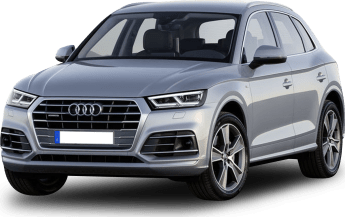
.jpg)
.jpg)
_0.jpg)
.jpg)
_0.jpg)
.jpg)
.jpg)
_0.jpg)
.jpg)
_0.jpg)

.jpg)
.jpg)











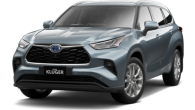



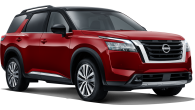















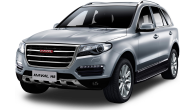




.png)

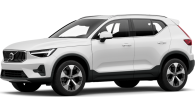






.png)


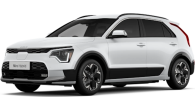
.jpg)
.jpg)


.jpg)

